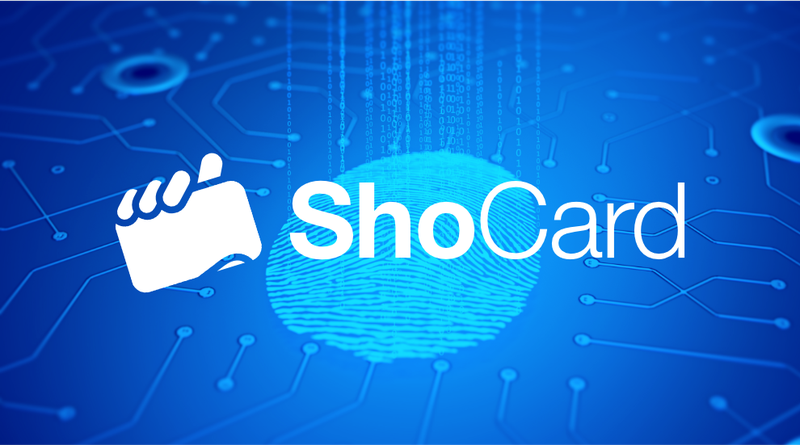Promoted: ShoCard’s Use Cases Bring Blockchain Solutions Where They’re Most Needed

Some blockchain applications are solutions looking for problems, but there are other issues that are just begging for help from decentralized technology. Managing and authenticating identity is one of the latter.
Traditional authentication processes in many industries use easily guessable identity questions, forgeable documents and unwieldy manual checks. As such, they are ripe for disruption. Armin Ebrahimi, CEO and founder of the blockchain-based ID management company ShoCard, said that the real challenge is focusing the lens.
“There are so many areas where solutions can apply; one of the challenges has been focusing on fewer verticals so that we can do a better job and not spread ourselves too thin,” he said.
ShoCard uses a mobile app to scan user credentials, storing a cryptographic digest of them on a blockchain. Users can then choose which credentials they share with others who see only the hash, rather than the sensitive information itself. This enables organizations to authenticate people quickly without endangering their data, Ebrahimi explained.
Easier Air Travel
ShoCard focuses on use cases that reduce friction in heavily regulated industries. One example is in air travel. ShoCard partnered with travel technology provider SITA to provide a travel authorization solution based on a blockchain.
In the ShoCard/SITA system, travelers scan their passports into a mobile app and take selfies, using a private key to hash this verification data on the blockchain. They begin their journey by presenting a data-linked QR code to an agent or a kiosk. The travel system verifies the travelers’ identities against the blockchain data and then issues a single travel token that they can use to pass through checkpoints such as passenger lounges and check-in desks.
At each new checkpoint, the travelers use the app to display a new QR code representing their token, which an agent or kiosk verifies before sending them on their way.
Each agent or kiosk verifies a traveler’s token using its private key to hash that transaction. The proof of the verification gets stored on the blockchain, creating an immutable, decentralized audit trail of the passenger’s journey, allowing that the passenger to pass through checkpoints at near-walking speed. ShoCard is now working with other airlines on this solution.
Changing Healthcare
At the 2018 Healthcare Information and Management Systems Society health conference, ShoCard and RF Ideas, an employee badge reader manufacturer, demonstrated the fruits of a joint effort: and a secure credential badge reading system for busy healthcare staff using ShoBadge’s enterprise ID authentication system. The system uses low-energy Bluetooth technology to read practitioners’ badges or mobile devices and check their credentials against hashed data on a blockchain.
“The doctor or clinician can access a database or computer, or gain physical access to a building, using the ShoBadge app,” said Ebrahimi. “Their hands are full, and they want to be able to access things pretty seamlessly while having their ID tied to biometrics.”
By partnering with a no-touch ID reader, ShoCard can grant fast access to staff without storing their credentials in a central place, making it especially useful for healthcare workers who contract with multiple healthcare providers, for example.
Improving Finance
As another heavily regulated industry, financial services is an area where secure blockchain-based processes helps to smooth transactions along. Know your customer (KYC) requirements is an area especially ripe for disruption. Today, each bank wanting to onboard a new customer must go through a cumbersome, time-consuming and expensive process to gather information about their customers for compliance purposes.
Blockchain technology provides a way for multiple banks to share that KYC process. By storing hashed user credentials and KYC certifications on a blockchain, a financial institution can empower customers to share that information with others. When signing with a second bank, customers can point it to their hashed credentials and KYC certification, enabling the bank to authorize the customers without querying any other financial institution’s database. Even transactions with the initial bank can be more efficient and easier to use as the need for usernames and passwords or answering knowledge-based authentication is eliminated.
“That cuts costs but also makes a more hygienic KYC where they know that a customer has a well-defined credit history and is who they say they are,” explained Ebrahimi. “That leads to an ecosystem where there’s a method for compensation.”
ShoCard is working with several banks using this process.
As these use cases play out, blockchain solutions will get us closer to solving problems, like data breaches and authentication/authorization inefficiencies, that have plagued organizations for years as customer volumes increase. But a decentralized system will make the sharing of that information more seamless, safe and secure.
This promoted article originally appeared on Bitcoin Magazine.


